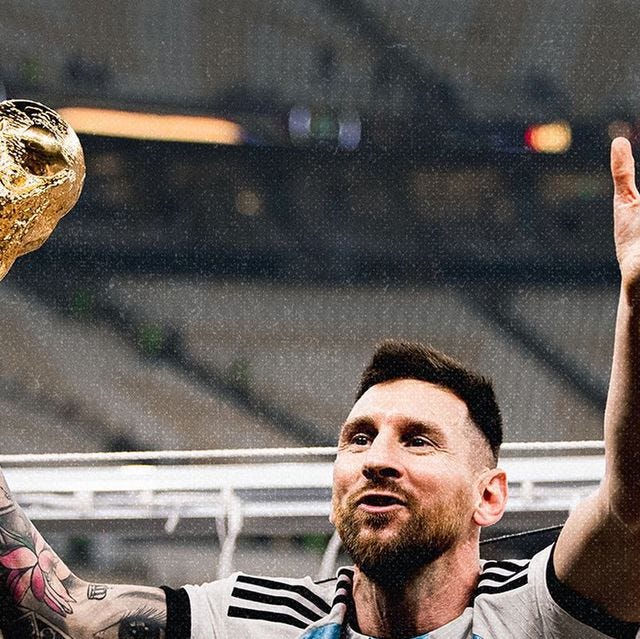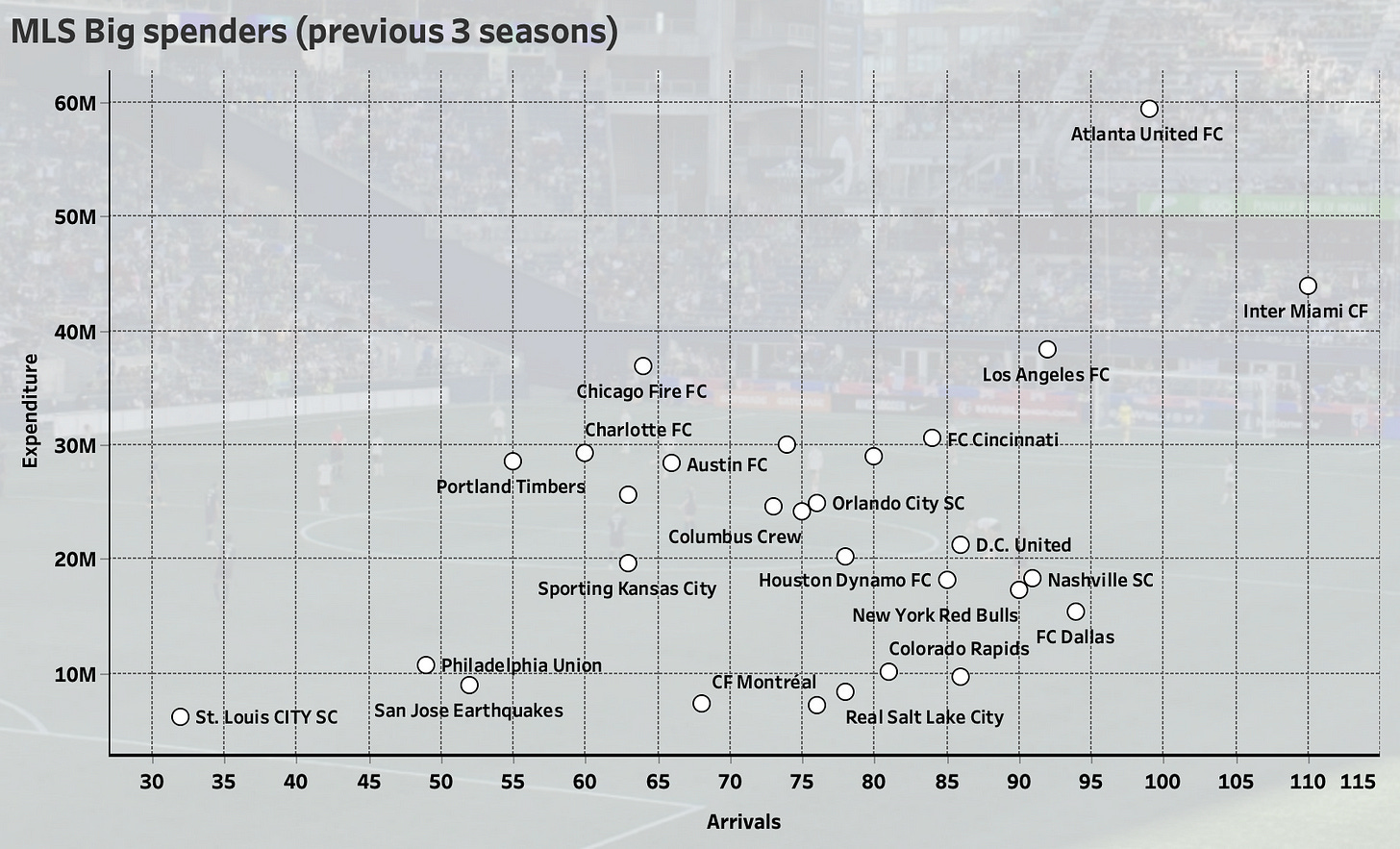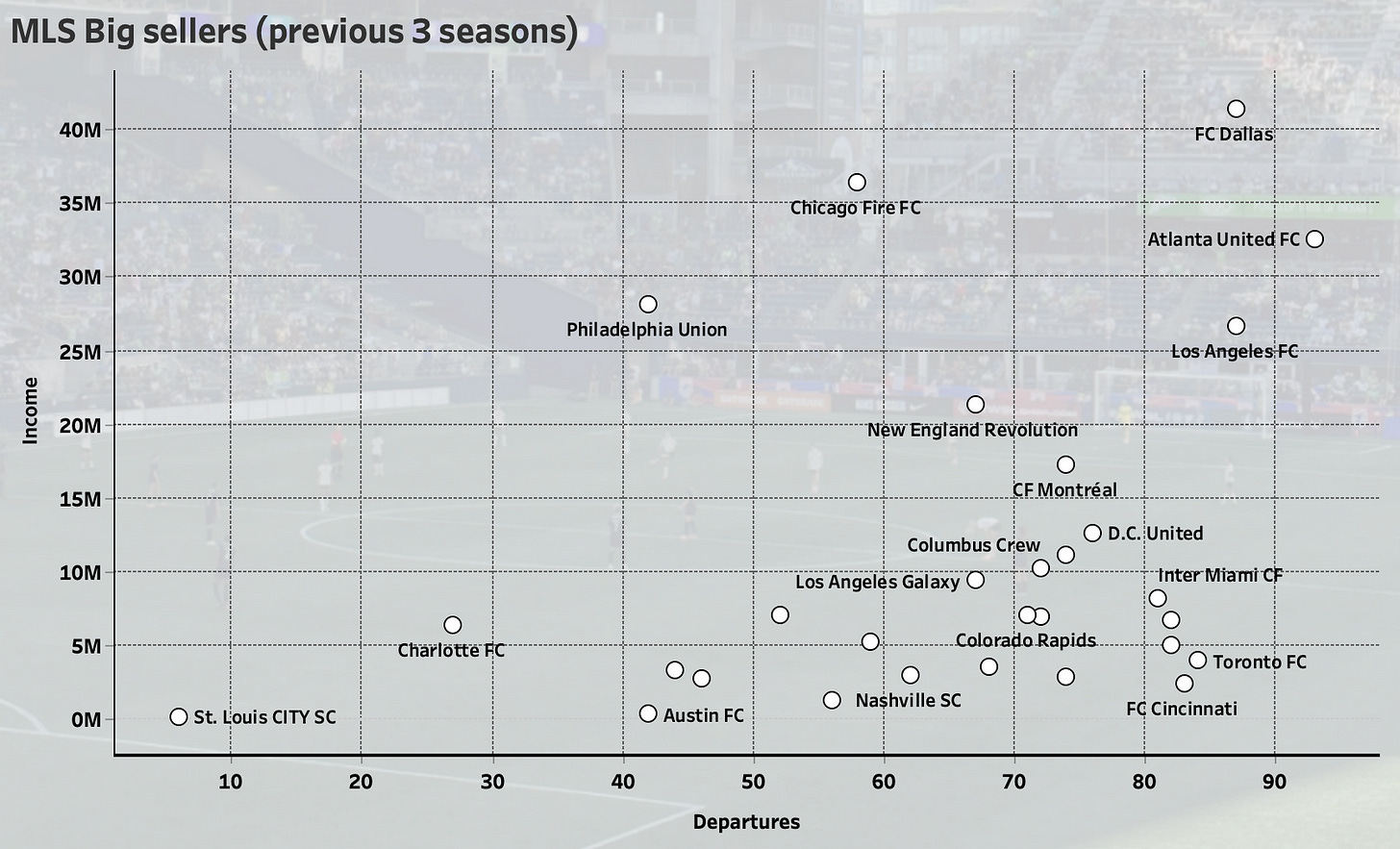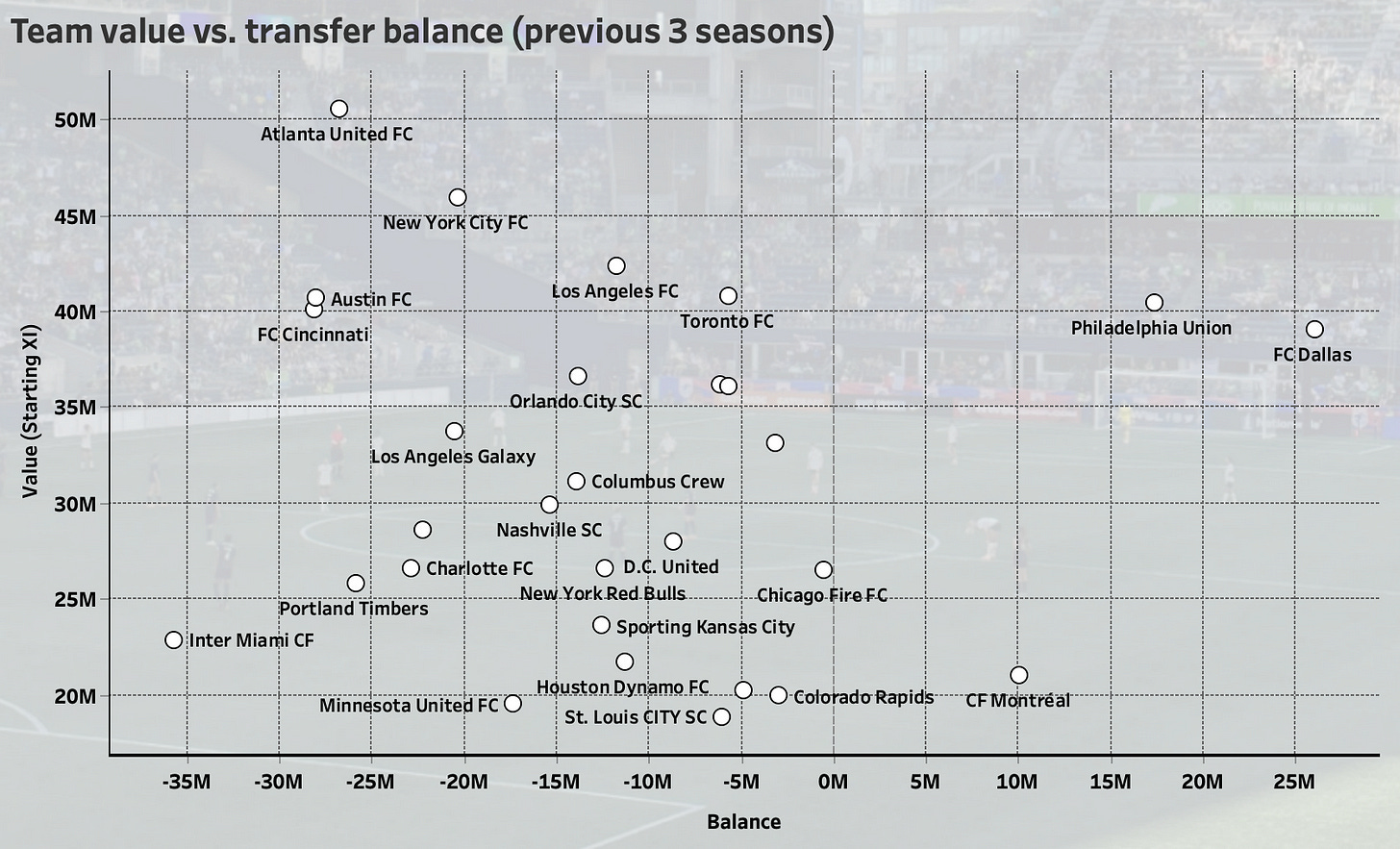First Post and Digging into some Finances
Welcome! I'm really glad to have you here!
If you’re new here, this is the official substack for MLS Stats! I do statistical analysis on various topics ranging from Major League Soccer teams and players to the U.S. Men’s National Team. I am most active on Instagram (@mlsstats) and Twitter (@mlsstat), but I created this page to publish long-form content that isn’t as suited for social media. If you’re interested in American soccer, sports analytics, or supporting me and what I do, I would greatly appreciate it if you could subscribe to receive emails every time I post. It is free, it helps a lot, and you get interesting articles in your inbox. Welcome and thank you all! Now onto the article:
MLS is an ever-changing league. From its inception in 1993, there have been ups and downs—teams have folded while others have achieved international success. The league is undoubtedly in the best place it has ever been; last year, the Seattle Sounders became the first MLS team to win the Concacaf Champions League (CCL). You could also make an argument for the record number of teams in the league (29, soon to be 30) as proof of its success. The league has even made recent leaps in sponsorships and deals, signing a TV rights contract with Apple last year that is worth at least $2.5 billion. Yet, despite all of these compelling examples of MLS power, none of them compare to the news that broke earlier this month. Messi is coming to Major League Soccer.
The transfer, which is likely to revolutionize the league (as David Beckham’s move to LA Galaxy did in 2007), has spurred conversation on what MLS will look like in 5 or 10 years. Will DP slots still exist? Is the salary cap still going to be a thing? Will promotion and relegation be introduced? These are all worthwhile questions that deserve to be discussed, but for today, I wanted to take a look at the current state of MLS finances, from transfer spend to wage bills, in order to get a feel of what direction the league is headed. Hop on, it’s Tableau time.
Inter Miami and other-worldly expenses
This first graph is pretty self-explanatory. On the x-axis, number of arrivals, i.e. how many players have been transferred in. On the y-axis, how much these players have cost. This data was sourced from Transfermarkt.com and reflects transfers from the 20/21 season up until the beginning of the 2023 season. The graph does not show any transfers that have already been or will be completed this summer transfer window. As expected we can see St. Louis City SC in the bottom left, as they just joined this year, and so haven’t had much time to spend money on transfers. In front of them, Philadelphia Union and the San Jose Earthquakes, with both teams making a relatively small amount of transfers while also spending a low amount of money. Other teams that spent less than or about $10 million are Seattle, Montreal, RSL, Toronto, and Colorado. Every other team has spent at least $15 million in that same time period.
As for the big spenders, Atlanta United sit clearly atop the pack, having spent nearly $60 million in 3 seasons. For an MLS team, this is remarkable. However, other teams have spent similarly large sums of money. Inter Miami, LAFC, Chicago Fire, FC Cincinnati, and even LA Galaxy have all spent more than $30 million since 2020. Interestingly, of these 6 teams, only 2 have seen real success in this season and last. LAFC won the league and reached the final of the CCL in May, while FC Cincinnati are on track to win the supporter’s shield in record-breaking fashion. As for the rest of these teams? Not much to write home about.
Interestingly, Philadelphia and Seattle are performing better than Atlanta and Miami despite spending $30-50 million less, but I’ll touch on this more later on. For now, it’s easy to recognize that in a league where there are such limits and controls on how much money you can spend, it doesn’t seem entirely advantageous to go out and push those limits every season. Seattle, for example, made two or three major acquisitions over 5 years ago and haven’t had to mess with the team much since. Philadelphia rely on an amazing youth system, and like the Sounders, have a strong identity that doesn’t prioritize spending. As frustrating as that might be for fans, in terms of running a football club, it’s smart business. Atlanta may splash the cash for a shiny new winger every 5 months, but at the end of the day, their team isn’t performing better because of it.
Prolific academies
Take a look at the top 5 teams in the graph above. Like the previous one, this graph shows transfer activity, but this time, it’s departures and income from these transfers. What can we say about each of the teams that have “made” (I say “made” because some of them had net losses) over $25 million each? Well, there are certainly 3 familiar names and 2 outliers. As previously mentioned, the Philadelphia Union academy is one of, if not the best in MLS, with products like Brenden and Paxten Aaronson, Jack McGlynn, Auston Trusty, Mark McKenzie, and Ben Bender. FC Dallas is similarly known for their academy program, with graduates Ricardo Pepi, Jesus Ferreira, Alex Zendejas, Justin Che, and Kellyn Acosta. As for the other 3 teams, well, they mostly sell players they have already bought. These sales are not always necessarily bad: LAFC paid under $3 million for Christian Arango and sold him two years later for twice the price. They did a similar deal for Diego Rossi. But at their core, each of these teams spends money, makes some money back, and then keeps spending it again, constantly making moves on the market (this is less so true for Chicago). As a result, both Miami and Atlanta have had net losses of over $25 million in this time.
The most valuable teams
Before we talk about visual success, in terms of points, I want to talk about transfer value. Teams that spend money, like Atlanta and Miami, aren’t always guaranteed to have the most valuable teams. There are other ways of increasing team value like the aforementioned academies (Ferreira at Dallas) or through free transfers (Rusnak to the Sounders). So, this next graph shows the relationship between transfer balance and team value. If a team has a lower value despite losing money, then they probably have a bad scouting department, or the club just doesn’t know what to do with expensive players. On the other hand, if a team has good finances and high team value, then they are likely good at one or both of the options outlined above. Let’s take a look:
Obviously, Atlanta has spent the most money and so has the highest team value this season. Behind them, NYCFC, which is both surprising and somewhat unsurprising. NYCFC is a team that in recent years has prioritized transfers and loans for young players. Look no further than their front three: Talles Magno (21), Santiago Rodriguez (23), and Gabriel Pereira (21). What this means is that even though their form in league play is poor, their team value is high. It’s a tradeoff of experience versus raw talent that NYCFC was willing to make, even if it hasn’t worked great for them. Of the rest of the top teams, there aren’t that many surprises. The only other team that stands out to me is Austin FC. To be entirely fair to the Green and Black, it’s not because they’re bad, it’s just that I forget they exist sometimes. That one’s on me. Also Sebastian Driussi makes up a good chunk ($16.2 million) of that $40 million team value.
Of the bottom teams, none really stand out like St. Louis do. STL are on track to be one of the best first-season expansion teams in recent memory, with an expected point total higher than both LAFC in 2018 and Atlanta United in 2017. They sit atop the Western conference having spent just $6 million dollars in their first season—for context, Inter Miami spent a whopping $29.3 million in their expansion season—while also maintaining the second lowest wage bill in MLS. Although I’m sure the wage bill will change next season as players sign new and improved contracts, this is a true feat for what is one of the most passionate soccer cities in the United States.
Overall, it’s clear that no one team performs the best business—some spend a lot and have high team values, others spend little and achieve similar results, and some sell to earn. What does this mean for the league? It means that there is no one true way to be successful, but it also means that due to league rules, every team is on a similar level. Is this good? Bad? Well, to answer that question, there is so much more to unpack.
That’s it for now! Check back tomorrow for more on how this data impacts MLS play, or subscribe to get it delivered directly to your mailbox. In the meantime, please make sure to check out my Instagram and Twitter if you haven’t already. Thank you all again!






